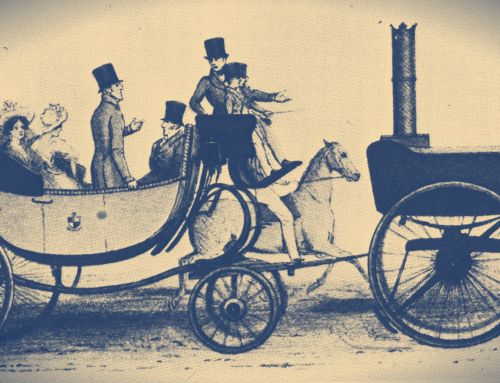If you’re hoping to read about consolidated (or outdated) Organizational Strategy practices, start by reading this text about the end of the era of Strategic Planning.
Here we will discuss how we can use emerging and deliberate strategies in a Volatile, Uncertain, Complex and Ambiguous context (VUCA).
The Differences Between Emerging and Deliberate Strategy
The classic organizational strategy is what we call a deliberate strategy. It usually materializes in an intentional plan or guideline that defines how things will come about. But a detailed plan isn’t required. Just two characteristics are necessary: 1. It’s defined before the action; 2. It’s built intentionally.
An emerging strategy is one that comes out of many small actions and day-to-day decisions. When these actions have similar qualities, that is, they are consistent and form a pattern, we have a strategy. For example, when a seller often offers generous discounts to increase his sales volume, we have a sales strategy there. There doesn’t need to be a conscious intention to create a strategy and there may even be a guideline (like not giving recurring discounts) being ignored.
Strategic Management in a VUCA world
To act in a VUCA world we need to combine the emergent and deliberate approach in a complementary way.
This combination is already present in practices, methodologies and concepts that I will present below. For didactic purposes I separated into four macro-ideas.
- Build a solid foundation in a volatile world
- Experiment and decide quickly to face uncertainty
- Collaborate with complexity, promote self-organization
- Draw outlines in an ambiguous world
Each of them doesn’t exist in isolation and between them there is no definite boundary. The goal here is simply to recognize and group what has already been tested in practice, making it clear that there are no “10 steps to an organizational strategy” or cake recipe, but a body of knowledge that needs to be recognized as such.
Build a solid foundation in a volatile world
Defining an anchor is critical to your organization. Something that gives solidity to a volatile world. The best we have found to date is a clear and powerful purpose. Some call them MTP (Maximum Transformative Purpose), others name it Evolutionary Purpose. It’ a way of expressing the positive impact that one wants to cause in the world. If it’s not in people’s minds and is used as the basis for day-to-day decisions, you can be sure that this isn’t the purpose we are talking about.
Strategic positioning can also be something more solid. The niche market is a great example. You can pre-select or aspire to that position by deliberately defining a niche. But beware, the uncertainties are huge. One of the few tools that are emerging that can help map possible positions in a rapidly changing marketplace is the value chain dynamic mapping called Wardley maps. Still with limited use.
Less predictive approaches are the already enshrined Business Model Canvas and Value Proposition Canvas. These are important tools for explaining hypotheses and helping to improve communication among members of an organization. Notice that we have exchanged detailed plans for instruments that increase our understanding of the challenges and also reduce ambiguity.
The discovery can also be done by acting intuitively. Many successful businesses were born that way. The Slack chat platform was created by a gaming company that needed to improve its communication. By solving their inner problem, they have discovered an incredible niche business. Note that there was no intentionality. The same thing happened with Trello.
Pivoting
Even what is apparently solid sometimes needs to be changed. The need for radical changes in the strategy arises, that is, the purpose needs to change, the niche, the positioning or the business model. This is what startups call pivoting.
If your company is past childhood and you are not a young startup, you need to understand that this change may not be so simple, especially when organizational design and culture create barriers to change. That is why we need to work in an integrated way on the other 3 macro-ideas.
Experiment and decide quickly to face uncertainty
We need to be more aware of how unpredictable things are. All plans should be seen as a current desire for how things would be done if anything could be done now. It would be the equivalent of a “mental experiment.” A plan is no longer a prescription of how we should act in the future and becomes an optional exercise.
When there is a need for a plan, as it involves a long-term, high-cost decision, such as building a hospital in the x or y region, it should be simple and frequently revised. The fallacy of the unrecoverable cost should be avoided as much as possible.
Annual budgets lose their place for a continuing budget. Traditional design methodologies (waterfall) lose space for agile methods. Giving preference to continuous value delivery allows for fast feedback cycles. We look at the end of each sprint or each “user story” to re-evaluate how we can deliver more value with less energy.
Prototyping and experiments are part of this arsenal of resources. MVPs are built and tested. And this can’t be restricted to a department or area of the organization. Everyone must be involved in innovation processes.
And this only happens when the maximum of autonomy is given and of definitive way, not of circumstantial way. This means distributing authority to teams and people. Fleeing also from analysis paralysis and slow consensus.
If faced with all the need for change and uncertainty, people need to ask for permission (from a boss or from the group) to make decisions or make small experiments, the VUCA world will laugh at them.
Collaborate with complexity, promote self-organization
First let’s define what characterizes complexity. When we work in a complex environment we:
- We can not relate cause and effect beforehand. Only retrospectively.
- We see results and patterns emerge without our control.
- We influence the system and at the same time the system influences us.
- Organizational markets, ecosystems, and cultures are complex systems and can not be understood with the traditional reductionist approach of breaking down into parts, seeing how each part works. In the meantime its action has already caused unpredictable changes in the system.
Traps
We can not deny the complexity in the market and the internal environment of the organization. When we fail to recognize this, we commit a series of strategic mistakes and errors:
- We believe that “specialists” have a special type of vision about the market or organization and can see things we can’t;
- We invest time and resources creating central control and oversight mechanisms in the hope of seeing and controlling all aspects of the business;
- We implement mechanisms to measure individual performance and we reward it, as we believe that we guarantee results;
- We plan everything with the maximum details, even if the planning of the plans requires great resources and that execution is impaired because unforeseen things emerge;
- We establish in our head an artificial separation between strategic and tactical decisions, ignoring the emerging strategy and the butterfly effect;
- We create arbitrary rules and policies in an attempt to keep things “manageable” and we deny the possibility of revision and adaptation of those rules;
- We penalize the error, because we still believe in the great capacity of people to anticipate the problems. Therefore, an error can only be associated with bad faith or negligence;
- We limit the freedom of action of employees as much as possible, because we still believe in the principles of scientific management. After all, if we treat each other as machines or parts of a gear, we will get rid of the complexity that afflicts us and we will have only one complicated apparatus;
These pitfalls are so prevalent in our business and management schools that we can call them common sense.
In this case, nothing beats the “negative way” proposed by Nassim Taleb. If we want to create an antifragile organization (it is not enough to be resilient), we need to stop with the practices mentioned above.
Very simple. This is the negative way. Stop doing what causes the most damage.
By denying and struggling against complexity, these practices limit self-organization and hamper evolutionary processes beneficial to organizational strategy.
Draw outlines in an ambiguous world
We want to release the power of an evolutionary process, and this includes experimenting with and testing many ideas and concepts. But if we don’t create outlines and structure, there is a chance we will reach high levels of creative entropy. Bringing in practical terms:
Instagram’s original strategy was to offer an app that allowed you to check in at establishments, make plans (future check-ins), earn points by spending time with friends, taking photos and more. Over time they have been defining a lighter outline and specializing in one thing: taking and sharing good photos. If they were still open to developing all those features, they would most likely have a serious problem of lack of focus or excess of creative entropy.
The job of giving clarity about what needs to be prioritized and what is expected of each person is what we call drawing outlines and structure. It’s not about creating long-term, dreamlike plans with dozens of goals, timelines, and expected results. This creates more confusion than clarity.
It sounds simple, but it involves a continuous effort and not just a one-shot initiative. Two practices can be highlighted here.
The creation of roles that are more granular than positions and functions (ambiguous and generic) and which are updated in a recurring way to reflect the current reality of the organization. This is a practice present in frameworks such as Holacracy and Sociocracy that has a basic structure that helps to give clarity.
Another practice is to correctly use the OKR approach (never tie to incentives) or to create simple heuristics about what is most important for the next 3 months. This shorter horizon and simplicity of rule/objective helps a lot in VUCA contexts. Importantly, both creating roles and defining OKRs can not be a purely top-down process as this would go against self-organization.
Transparency
The last point to note is that the outlines become clearer when there is transparency. For example, when secrets and confidential information exist, people in the organization diminish their ability to distinguish how a decision they need to make would affect the bottom line. Free access to all kinds of information within the organization helps in contextualization and avoids rumors and rumors, reducing ambiguity and uncertainty.
Conclusion
At the intersection between deliberate and emergent strategies, we find practices that define purpose, give agility, promote self-organization, and draw contours.
This set of practices grows every day through innovative organizations that have realized that the old approach to strategic planning does not account for the VUCA reality. I hope that the examples cited here serve as inspiration and help your organization on your journey.
Target Teal works by helping organizations rethink their organizational practices. If you liked our vision of how to act strategically and want to have a coffee to deepen the conversation, contact us.









[…] Strategy still exists in self-management, however, we change the way we think and act strategically. This article on strategy in the VUCA world provides good ideas on how this is done. […]